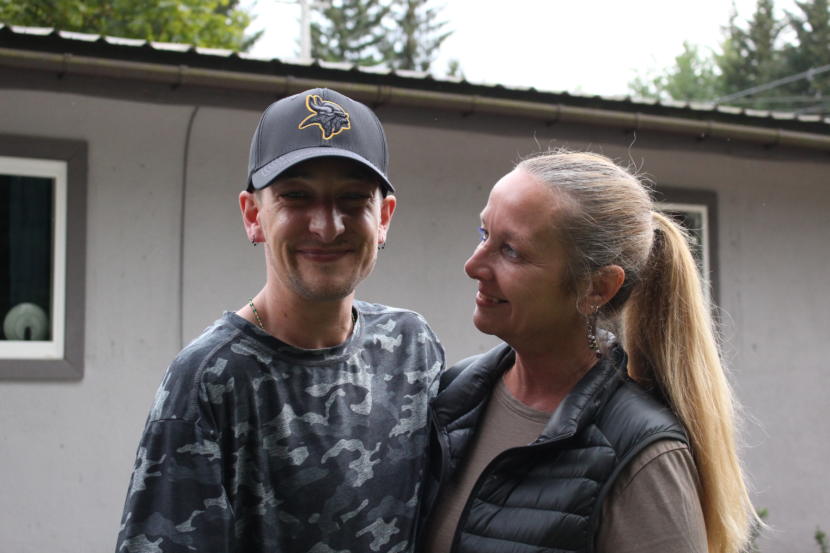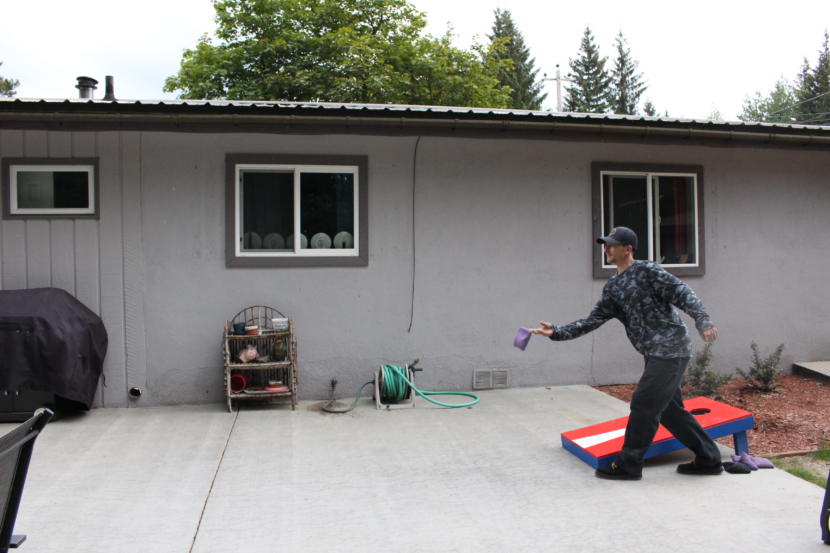
Some hospitals in Alaska are changing the way they treat patients with opioid use disorder. A trip to the emergency room can be a crucial window to help people in their recovery.
Now some providers are giving patients a medicine to ease the transition so they can seek additional care.
Recently, a hospital in Juneau completed one year of this program with encouraging results.
Justin Brokken, 33, has a ritual with his parents. They regularly engage in friendly competition with handmade cornhole set. Earlier in the day, his mom, Vicki Brokken, beat him 21-1.
“Now, I’m not even going to be able to hit the board. The pressure is on,” Justin Brokken said with a laugh.
The Brokkens are enjoying this new family dynamic. For years, Vicki said her relationship with Justin wasn’t like this.
“Every single time he walked out that front door. I knew, and it went through my head, that could be the last time I ever saw my son,” Vicki Brokken said.
Justin Brokken was first introduced to opioids like a lot of Americans: at the doctor’s office.
At 14, he was given a prescription for painkillers after badly burning his hand in an accident. His injury left him with a permanent scar, and he said the craving for opioids didn’t go away.
“Anybody who’s had an addiction knows it’s hard to say no to something that makes you feel better,” Justin Brokken said.
For more than a decade, he said he felt like he was stuck in a volatile cycle. He was in and out of jail on drug-related charges. He started using heroin. He had moments when he wanted to quit, but they were fleeting.
Then, earlier this year, he experienced a huge turning point.
He checked himself into the emergency room at Bartlett Regional Hospital in Juneau, prompted by swollen ankles.
“Fairly certain I was dead,” he said. “But nope. I got lucky.”
Justin Brokken learned he qualified for a new program that’s becoming the standard for how to treat opioid addiction in hospital emergency rooms across Alaska — from Petersburg to Anchorage. He hadn’t used opioids the day he visited the ER. He was in what medical staff call “acute withdrawal.” So they could give him a pill to help block the cravings.
Next, they’d connect him with a network of providers to continue medication-assisted treatment.
“It gives you time to change your life,” he said.

In 2016, federal legislation made it possible for a wider array of medical providers to prescribe buprenorphine, also known by the brand name: Suboxone. And since then, the numbers of prescribers in Alaska has more than doubled, according to the state.
As a result, more clinics are able to offer medication-assisted treatment, and some hospital ERs are acting as a point of contact.
Before working in the Bartlett emergency room, Dr. Lindy Jones was one of only a handful of providers in Juneau who prescribed buprenorphine.
“Initially, there was resistance because it was something new,” Jones said.
He said there’s been a shift in the way the medical community views medication-assisted treatment. In the past, there could be a misconception that it was trading one addiction for another.
Jones said more and more providers recognize it helps stabilize patients. They typically receive counseling and can eventually go back to school or work.
“I find it one of the most effective interventions for the right person that there is,” Jones said.
Claire Geldhof, a case manager at Bartlett, checks in with the same 15 former patients or their families on the phone at least once a month. Up until last summer, the emergency department was limited in how it could treat people with opioid addiction.
Emergency providers tried to make their patients comfortable.
“But it wasn’t necessarily the right medicines to be giving patients with acute opioid withdrawal,” Geldhof said.
Geldhof thinks the buprenorphine has made a big difference in the life of the ER patients.
Of those 15 people she calls regularly, 11 of them — including Justin Brokken — have continued to access services or medication-assisted treatment.
Shortly after his visit to the ER, Justin Brokken had surgery to repair a valve in his heart damaged from a bacterial infection by injecting heroin. He said he took pain medicine for a couple of days. But after that, he stopped. He talks to counselors and takes a Suboxone pill to help block the craving for opioids.
Justin Brokken credits that initial meeting in the emergency room with helping him navigate his recovery. But he thinks these new treatment options in Alaska are just the beginning.
“I think there’s still a lot more progress that needs to be done,” he said. “I think there’s a lot more spending that needs to be put into it and give it an actual shot.”
The Alaska State Hospital and Nursing Home Association is concerned Gov. Mike Dunleavy’s cuts to Medicaid could affect these kinds of programs down the line. The cuts could impact providers ability to offer services.
As for Justin Brokken, he’s adjusting to life at home and healing from his surgery. Recently, he was able to tell his mom about a big improvement: He no longer has to take blood thinners.
“The lady just called a minute ago and told me I’m off of them,” he said. “I don’t have to take them. Not even tonight. I’m done. That’s a big step!”
And that’s how Justin is approaching his recovery: one day at a time. Tonight, maybe another game of cornhole and sloppy Joes for dinner.